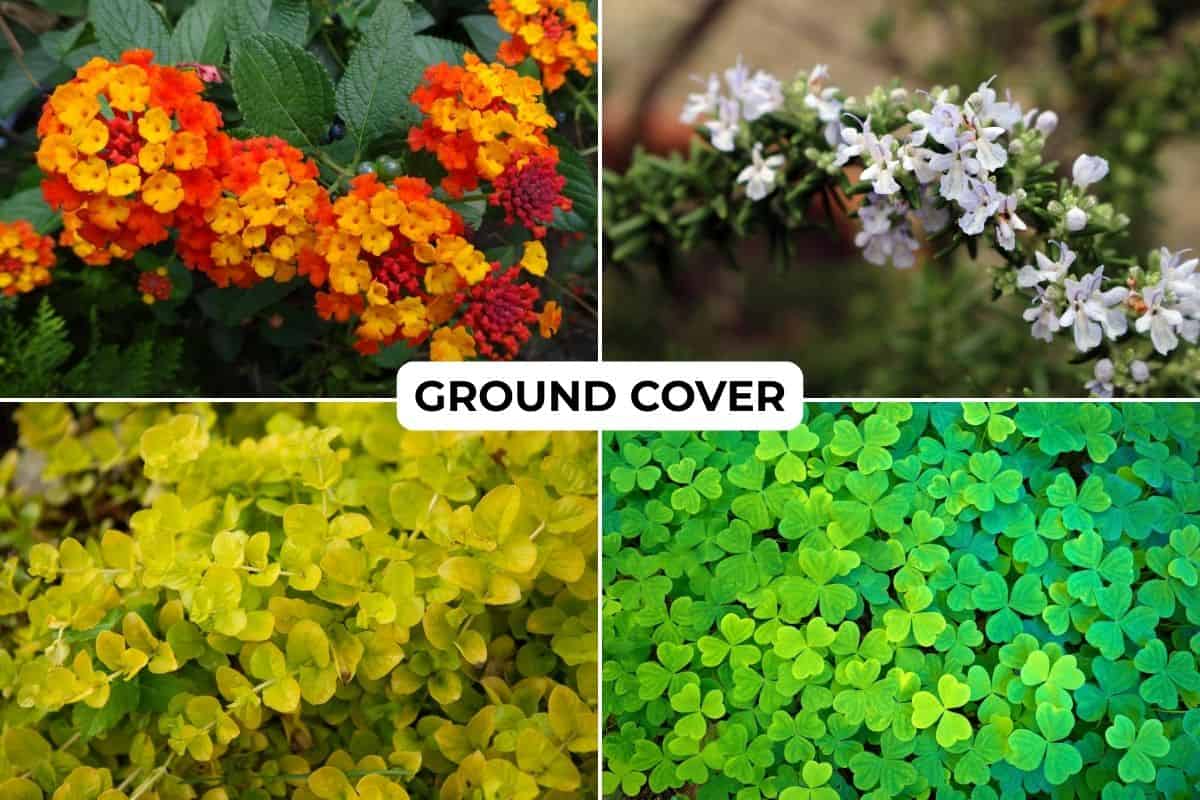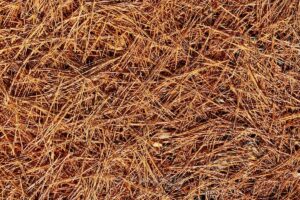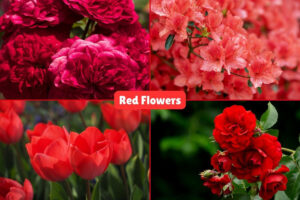This page may contain affiliate links. If you click and buy, we might get a small commission at no cost to you.
If you need ground cover plants that thrive in full sun, you’re in the right place. Below you’ll find 15 excellent options that can handle bright, direct light while adding texture, color, or even replacing traditional grass in your yard. Whether you’re looking for walkable covers, drought tolerance, or flowering beauty, this list covers a range of needs. Let’s get into it.
1. Clover
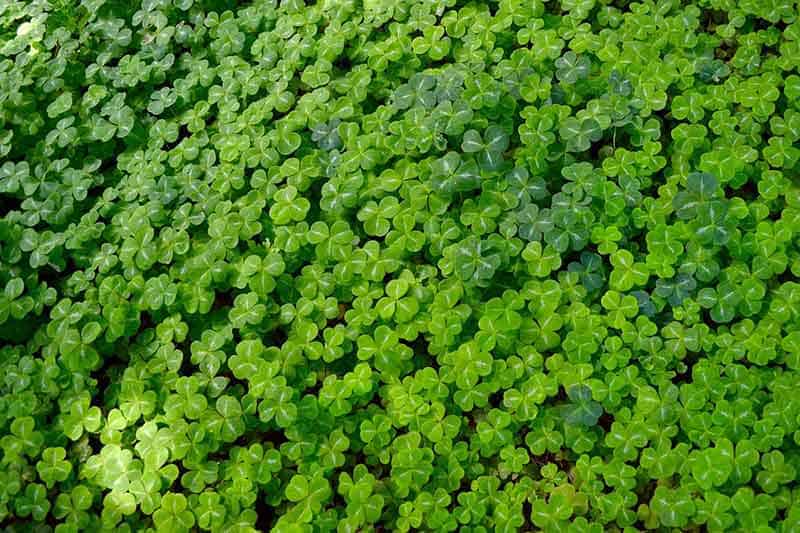
Species: Trifolium repens
Clover, especially white clover and microclover, is one of the most popular alternatives to traditional turfgrass. It grows quickly, stays green with minimal watering, and naturally fixes nitrogen in the soil. Clover also produces small white to pinkish blooms that attract pollinators and beneficial insects.
Best suited for full sun to partial shade, clover thrives in most soil types and requires little mowing. It grows about 4–6 inches tall, tolerates light foot traffic, and helps suppress weeds naturally. It’s also resistant to many common lawn pests and doesn’t require fertilizers to stay healthy.
2. Creeping thyme
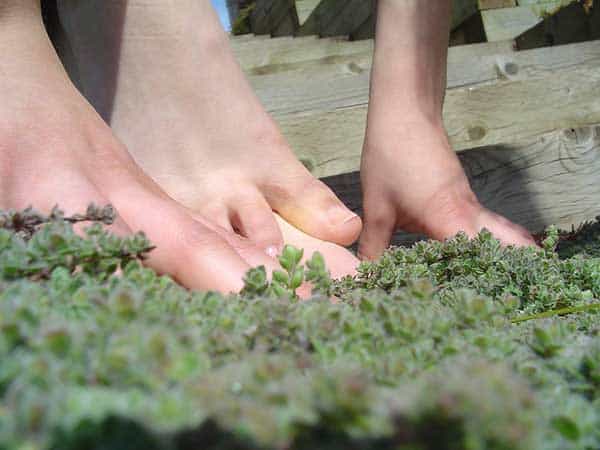
Species: Thymus serpyllum
Creeping thyme is a fragrant, sun-loving ground cover that produces mats of small leaves and delicate flowers in shades of purple and pink. It’s a favorite for walkable paths and borders due to its ability to handle light foot traffic and its pleasant scent when crushed underfoot.
This low-growing perennial reaches 2–3 inches in height and spreads easily in dry, sunny conditions. It prefers well-draining soil and is drought-tolerant once established. Creeping thyme also attracts bees and other pollinators, making it a functional and ornamental choice for sunny gardens.
3. Sedum
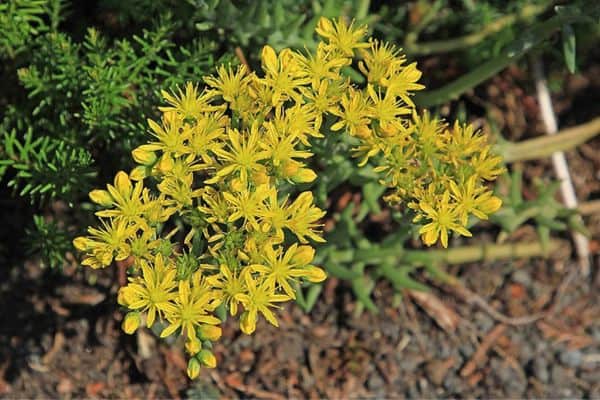
Genus: Sedum
Sedum, also known as stonecrop, is a diverse group of succulent plants well-suited for full sun and dry soil. With thick, fleshy leaves and low water needs, sedums thrive in hot, exposed locations and poor soil conditions. Many varieties also produce star-shaped flowers that bloom in late summer or early fall.
Ground cover sedums typically grow 4 to 8 inches tall and spread through creeping stems or dense rosettes. They are excellent for rock gardens, green roofs, or sunny slopes, where erosion control is needed without heavy maintenance. Sedum comes in various colors and forms, adding both texture and visual interest to your landscape.
4. Dymondia
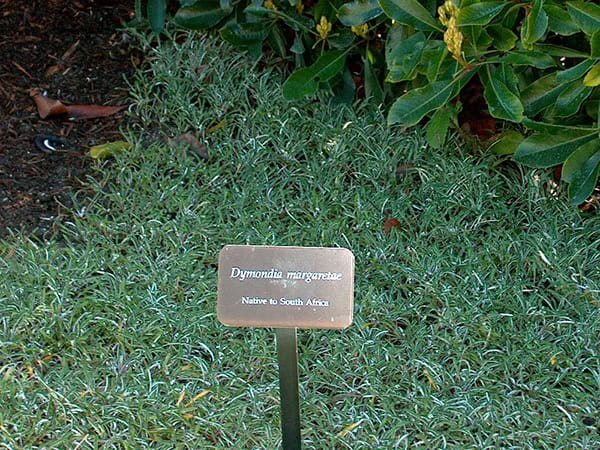
Species: Dymondia margaretae
Dymondia, sometimes called silver carpet, is a ground-hugging plant native to South Africa that thrives in sunny, dry areas. Its narrow, silver-green leaves create a tight mat that can handle occasional foot traffic. Yellow daisy-like flowers bloom sporadically during the summer, adding pops of color to its silvery foliage.
Dymondia grows just 1–2 inches tall and is very drought-tolerant once established. It prefers well-draining sandy or loamy soils and works especially well between stepping stones, along driveways, or as a low-maintenance lawn substitute in hot, dry climates.
5. Kurapia
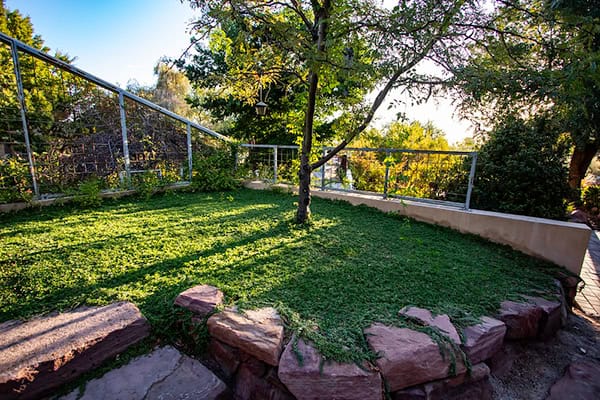
Hybrid species: Lippia nodiflora (cultivated)
Kurapia is a relatively new ground cover hybrid based on a native plant that thrives in full sun. It grows as a dense, low mat with small white flowers throughout the warm season. Kurapia is sterile, meaning it doesn’t spread by seed, and is designed for aggressive ground coverage and erosion control.
It grows about 1–3 inches tall and tolerates light foot traffic, drought, and heat. Kurapia establishes quickly and forms a thick ground cover that helps suppress weeds. It’s commonly used in sunny lawns, medians, and commercial landscapes where water conservation is important.
6. Blue star creeper
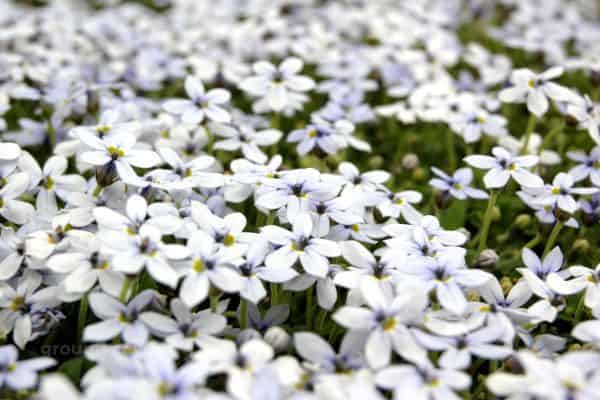
Species: Isotoma fluviatilis
Blue star creeper is a low-growing perennial known for its tiny, star-shaped blue flowers and spreading habit. It thrives in full sun to partial shade and prefers moist but well-drained soil. It’s often planted between stepping stones or along garden edges for its tidy growth and bloom potential.
This plant grows about 2 inches tall and spreads by underground runners. It forms a dense, green carpet and can tolerate occasional foot traffic, making it a good choice for walkways and sunny borders. Blue star creeper provides color, coverage, and weed suppression with minimal maintenance.
7. Ice plant
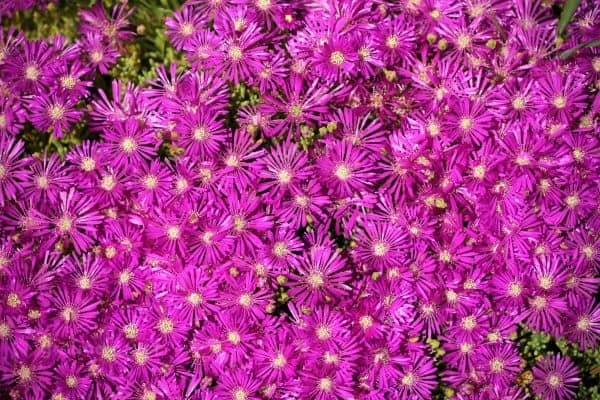
Species: Delosperma cooperi
Ice plant is a succulent ground cover that produces brilliant, daisy-like flowers in shades of pink, purple, and yellow. It’s ideal for full sun and well-drained soils, especially in hot, dry climates where other plants struggle. The fleshy leaves provide year-round texture and are resistant to drought.
Growing about 2 to 4 inches tall, ice plant spreads quickly and forms a vibrant mat that can help control erosion and reduce watering needs. It’s not tolerant of foot traffic but makes a bold visual statement in sunny, open areas or rock gardens.
8. Woolly thyme
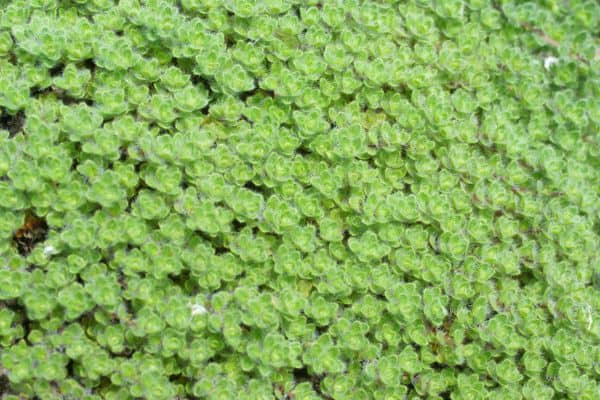
Species: Thymus pseudolanuginosus
Woolly thyme is a fuzzy-leaved ground cover that loves sun and dry conditions. It forms a low, dense mat that is soft to the touch and emits a pleasant scent when disturbed. While it doesn’t flower as prolifically as other thymes, it still produces small blooms in late spring to early summer.
This variety grows to about 1–2 inches in height and spreads steadily over time. It tolerates light foot traffic, especially when planted between pavers or along paths. Woolly thyme is ideal for sunny areas with poor soil where other ground covers may fail.
9. Creeping rosemary
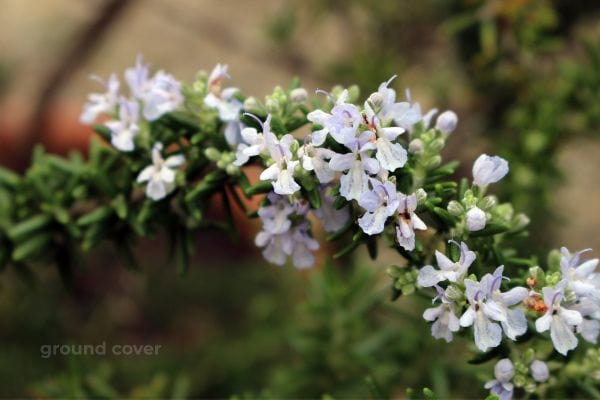
Variety: Rosmarinus officinalis ‘Prostratus’
Creeping rosemary is an aromatic, evergreen ground cover that thrives in sunny, dry climates. It features trailing stems covered in needle-like leaves and produces small blue flowers throughout spring and summer. This variety is both ornamental and functional, offering fragrance, culinary use, and drought resistance.
Typically growing 6 to 12 inches tall, creeping rosemary spreads several feet wide. It’s best suited for slopes, rock gardens, or retaining walls where its trailing habit can spill naturally. It prefers sandy, well-drained soil and benefits from occasional pruning to maintain a tidy appearance.
10. Chamomile

Species: Chamaemelum nobile
Roman chamomile is a fragrant, sun-loving herb often used as a ground cover in sunny lawns or borders. It produces soft, feathery leaves and cheerful white daisy-like flowers during the summer. The plant releases a pleasant apple-like aroma when touched or mowed.
Chamomile typically grows about 4 to 6 inches tall and spreads through creeping stems. It prefers full sun, light soil, and moderate moisture. While it doesn’t tolerate heavy foot traffic, it works well in low-traffic areas or ornamental borders where both fragrance and flowers are appreciated.
11. Yarrow
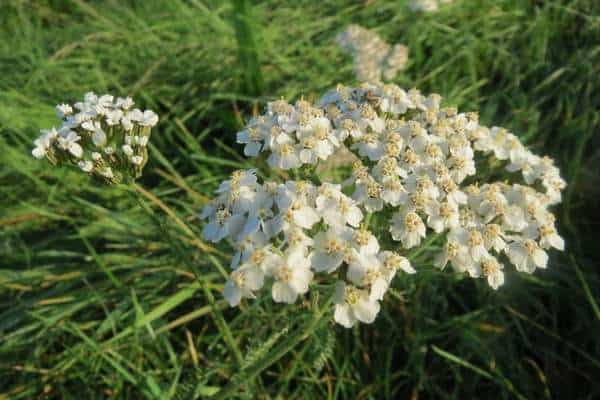
Species: Achillea millefolium
Yarrow is a hardy, sun-loving perennial that produces fern-like foliage and flat-topped clusters of flowers in white, yellow, pink, or red. It attracts pollinators, repels some pests, and handles heat, drought, and poor soil with ease. It’s often used in wildflower meadows, xeriscaping, or low-maintenance gardens.
It grows about 12 to 24 inches tall but spreads horizontally through rhizomes, making it effective for covering large sunny areas. While not ideal for foot traffic, it excels as a colorful filler plant or naturalized ground cover in sunny spaces.
12. Lantana
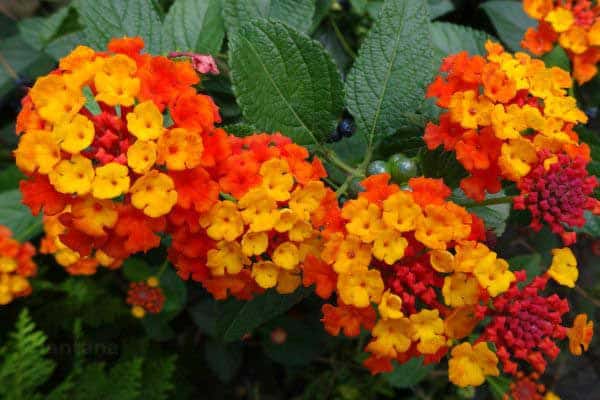
Genus: Lantana
Many ground cover plants do well in shade. Lantana, however, is a heat-loving option that thrives in full sun and poor soil. Low-growing varieties create spreading mats of green foliage with clusters of bright flowers that attract butterflies and hummingbirds. It’s a great choice for borders, banks, or erosion control in hot climates.
Lantana grows 12 to 18 inches tall and spreads several feet wide. It needs little water once established and blooms from spring through fall. In warmer zones, it acts as a perennial, while in colder areas it’s often grown as an annual or overwintered indoors.
13. Creeping Jenny
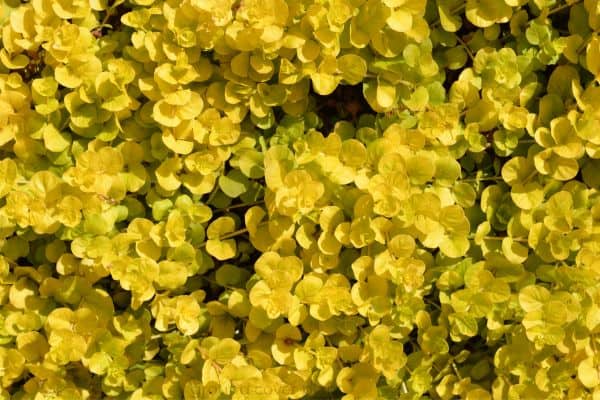
Species: Lysimachia nummularia ‘Aurea’
Creeping Jenny in its golden form can tolerate full sun, especially when soil stays consistently moist. It features bright chartreuse foliage that stands out in sunny spots, along with small yellow flowers that appear in early summer. This plant forms a dense mat that can spill beautifully over edges and containers.
It grows about 2 to 4 inches tall and spreads rapidly by rooting at the nodes. While it does best in moist soil, it adapts to a range of conditions if sun exposure isn’t too harsh. It works well for erosion control and visual contrast in open areas.
14. Native sedges (sun-tolerant species)
Genus: Carex
Some native sedges, such as Carex pansa and Carex texensis, are tolerant of full sun and make excellent grass alternatives in open landscapes. They form soft, grass-like foliage that moves with the wind and can be mowed occasionally to maintain a turf-like appearance.
Sun-tolerant sedges usually grow 6 to 12 inches tall and can spread by rhizomes or clumping, depending on the species. They require less water and maintenance than traditional grass, and many are native, making them a sustainable choice for sunny areas.
15. Silver ponyfoot
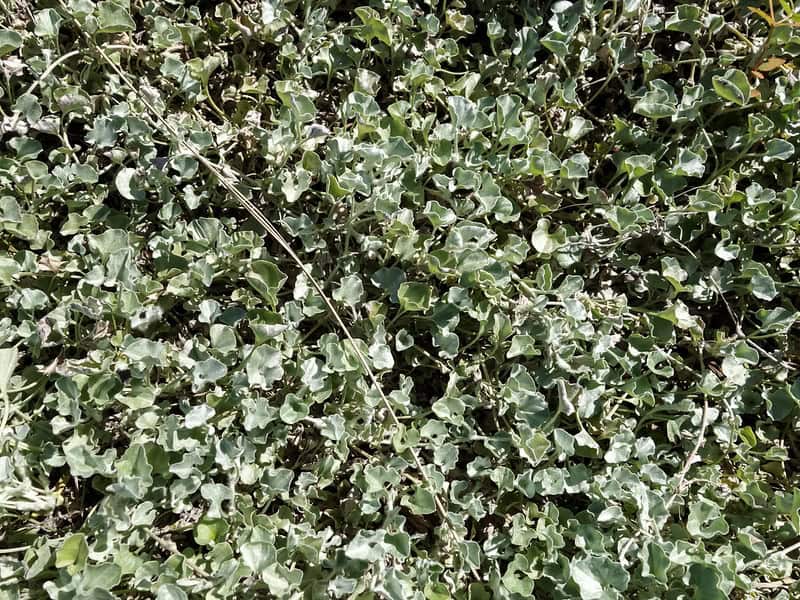
Species: Dichondra argentea
Silver ponyfoot is a drought-tolerant ground cover with trailing silver-gray leaves that create a soft, shimmering effect in full sun. It’s native to the southern U.S. and Mexico and is highly valued for its ability to thrive in hot, dry climates with minimal care.
This plant stays low to the ground, growing just 1 to 2 inches tall, and spreads steadily across beds, walls, or containers. It’s ideal for xeriscaping or pairing with desert-friendly plants. Though not suited for foot traffic, it excels as a low-maintenance, sun-loving ornamental cover.
